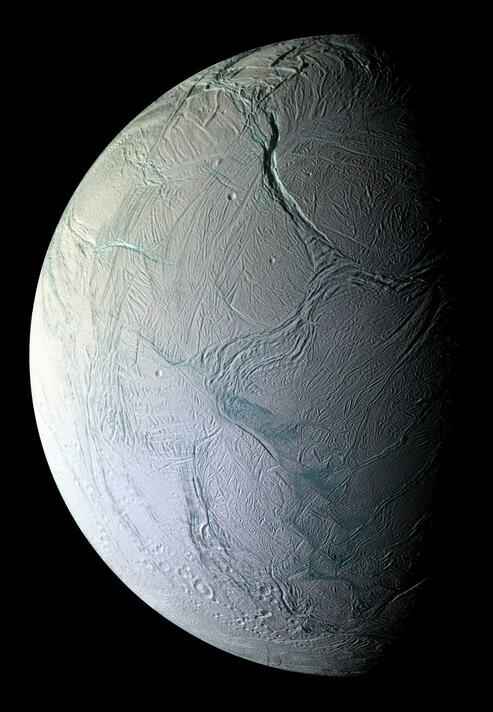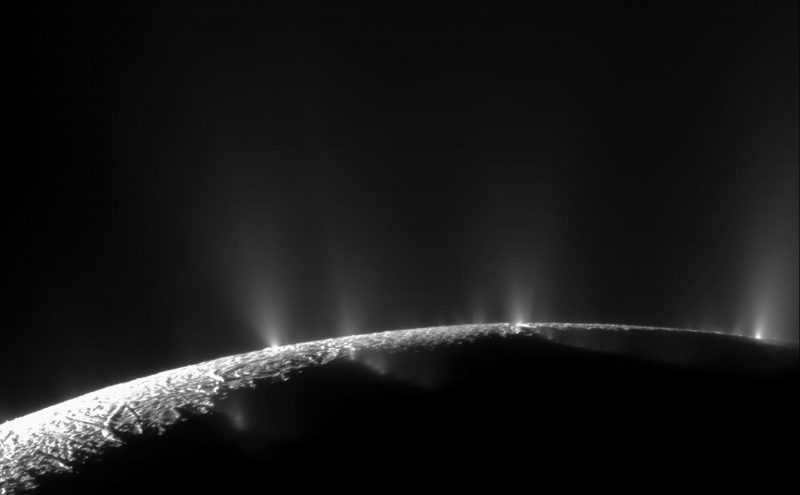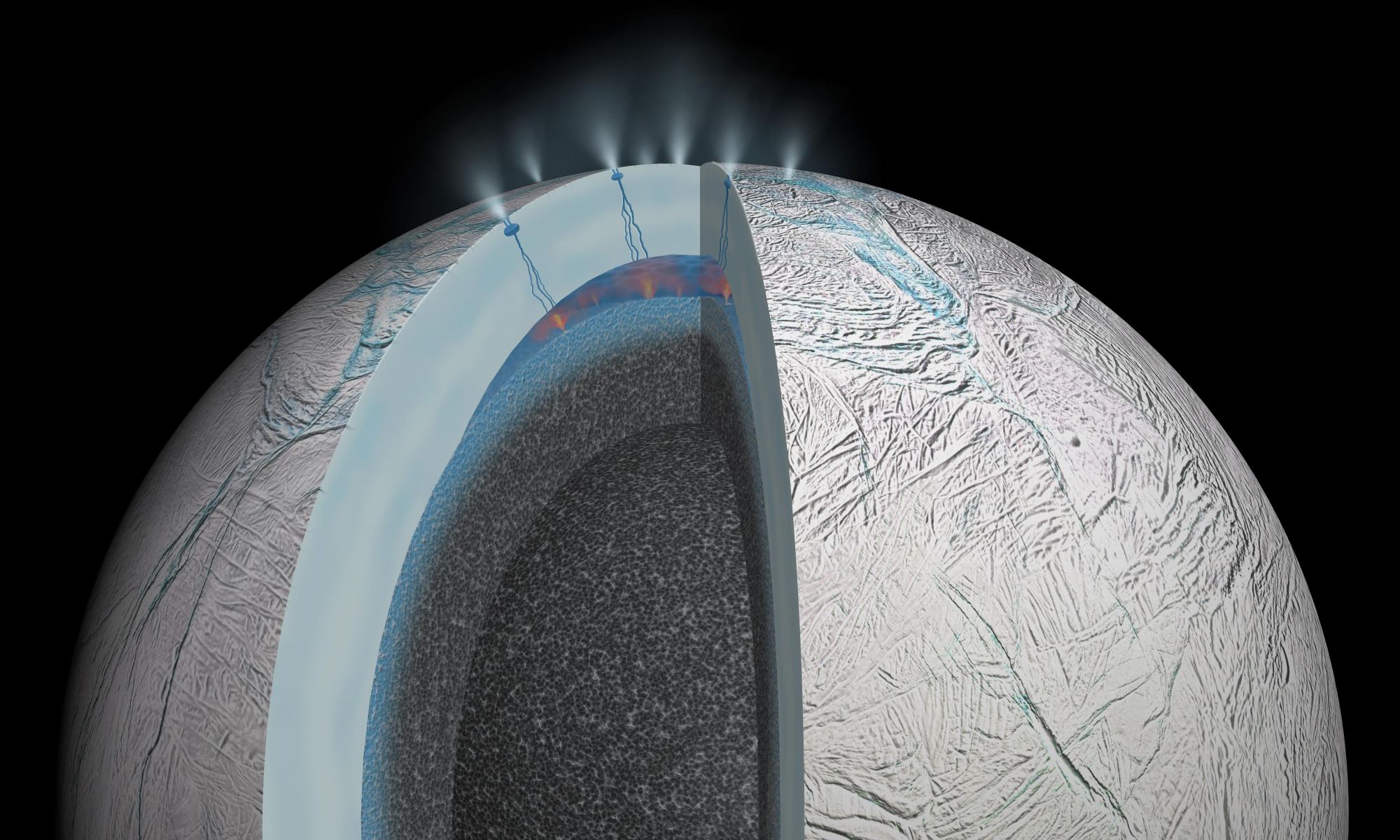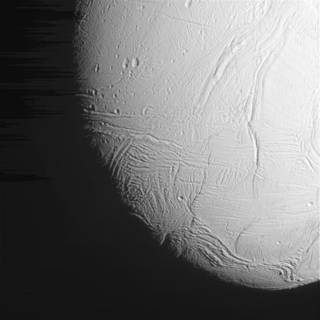Enceladus is blasting water into space from the jets at its southern pole. This makes it the ideal place to send a dedicated mission, flying the spacecraft through the plumes with life-detection instruments s. A new study suggests that a spacecraft must proceed carefully through the plumes, keeping its speed below 4.2 km/second (2,236 miles per hour). Using a specialized, custom-built aerosol impact spectrometer at these speeds will allow fragile amino acids to be captured by the spacecraft’s sample collector. Any faster, they’ll shatter, providing inclusive results.
Continue reading “Fly Slowly Through Enceladus' Plumes to Detect Life”Will Enceladus finally answer, ‘Are we alone?’
We recently examined how and why the planet Mars could answer the longstanding question: Are we alone? There is evidence to suggest that it was once a much warmer and wetter world thanks to countless spacecraft, landers, and rovers having explored—and currently exploring—its atmosphere, surface, and interior. Here, we will examine another one of Saturn’s 83 moons, an icy world that spews geysers of water ice from giant fissures near its south pole, which is strong evidence for an interior ocean, and possibly life. Here, we will examine Enceladus.
Continue reading “Will Enceladus finally answer, ‘Are we alone?’”Solar System Tours: Plumes of Enceladus
“We’re coming up on the plumes!” The co-pilot announced over the intercom.
The other six passengers and I took our positions along the viewing cupola at the belly of the “Tour Bus”, and each grabbed on to the hand and foot restraints to keep ourselves in place in the weightlessness. We were traveling about 400 km (250 miles) above the south pole of Enceladus looking down at the highly reflective surface that was so bright it took about a minute for our eyes to adjust. We all remained silent, and my heart was pounding in anticipation. The Tour Bus silently coasted for a few more minutes as we took in the breathtaking view of Saturn’s sixth-largest moon.
Continue reading “Solar System Tours: Plumes of Enceladus”The Raw Materials for Amino Acids – Which are the Raw Materials for Life – Were Found in the Geysers Coming out of Enceladus
The joint NASA/ESA Cassini-Huygens mission revealed some amazing things about Saturn and its system of moons. In the thirteen years that it spent studying the system – before it plunged into Saturn’s atmosphere on September 15th, 2017 – it delivered the most compelling evidence to date of extra-terrestrial life. And years later, scientists are still poring over the data it gathered.
For instance, a team of German scientists recently examined data gathered by the Cassini orbiter around Enceladus’ southern polar region, where plume activity regularly sends jets of icy particles into space. What they found was evidence of organic signatures that could be the building blocks for amino acids, the very thing that life is made of! This latest evidence shows that life really could exist beneath Enceladus’ icy crust.
Continue reading “The Raw Materials for Amino Acids – Which are the Raw Materials for Life – Were Found in the Geysers Coming out of Enceladus”Warm Poles Suggest Enceladus’ Liquid Water Near Surface
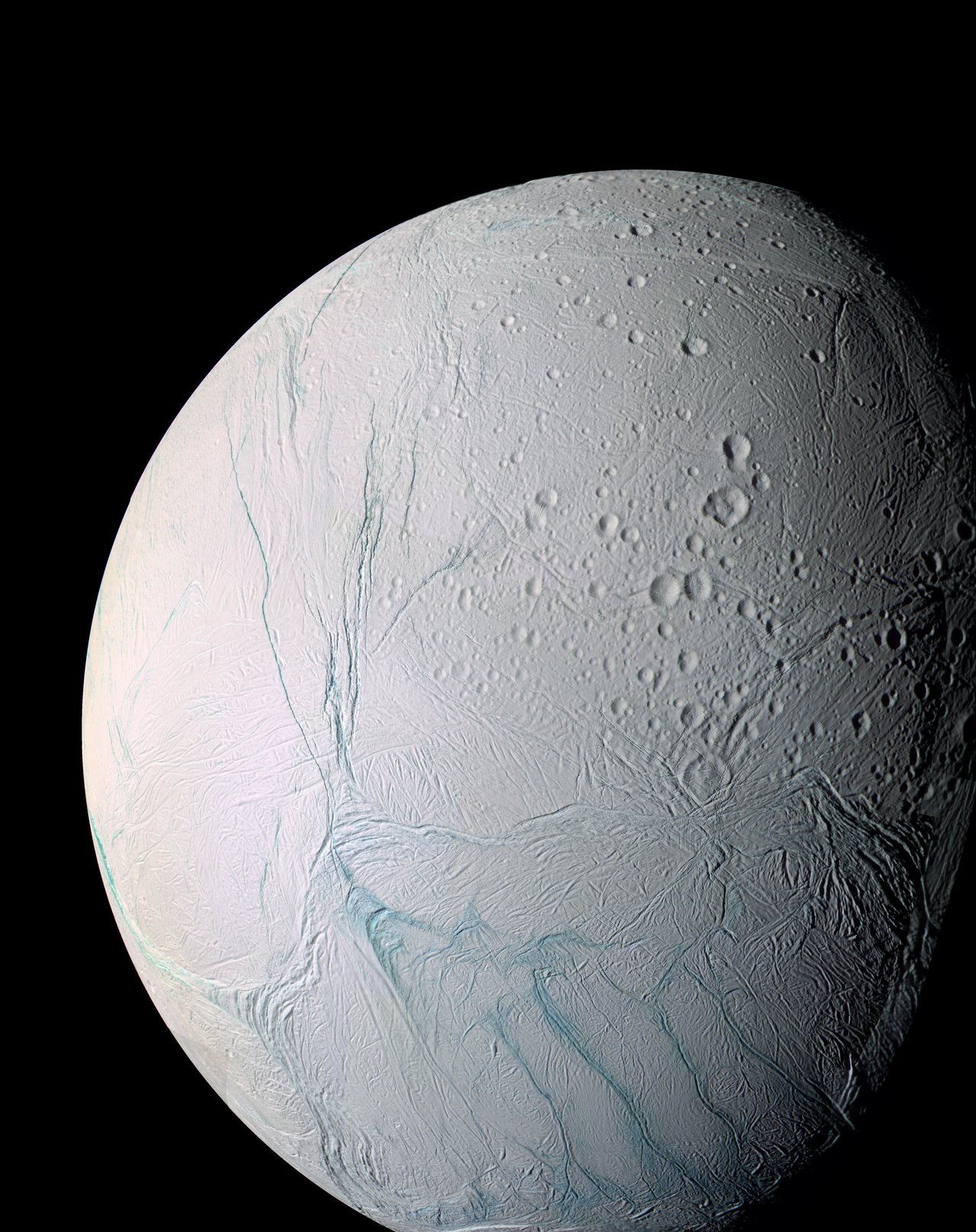
One of the biggest surprises from the Cassini mission to Saturn has been the discovery of active geysers at the south pole of the moon Enceladus. At only about 500 km (310 miles) in diameter, the bright and ice-covered moon should be too small and too far from the Sun to be active. Instead, this little moon is one of the most geothermally active places in the Solar System.
Now, a new study from Cassini data shows that the south polar region of Enceladus is even warmer than expected just a few feet below its icy surface. While previous studies have confirmed an ocean of liquid water inside Enceladus which fuels the geysers, this new study shows the ocean is likely closer to the surface than previously thought. Additionally – and most enticing – there has to be a source of heat inside the moon that is not completely understood.
“These observations provide a unique insight into what is going on beneath the surface,” said Alice Le Gall, who is part of the Cassini RADAR instrument team, from Laboratoire Atmosphères, Milieux, Observations Spatiales (LATMOS), and Université Versailles Saint-Quentin (UVSQ), France. “They show that the first few meters below the surface of the area that we investigated, although at a glacial 50-60 K, are much warmer than we had expected: likely up to 20 K warmer in some places. This cannot be explained only as a result of the Sun’s illumination and, to a lesser extent, Saturn’s heating so there must be an additional source of heat.”
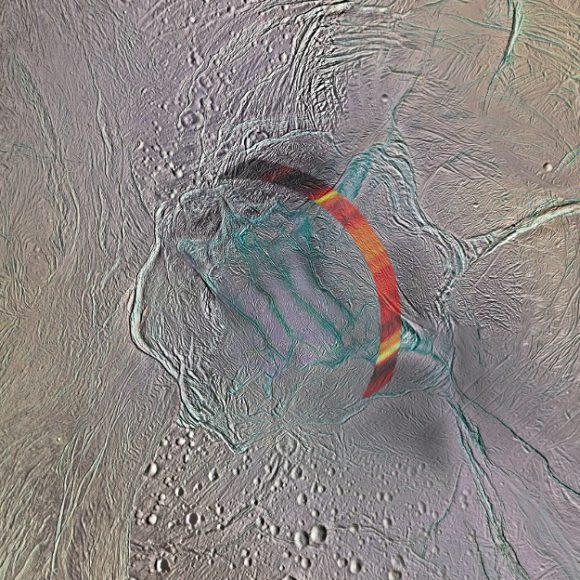
Microwave data taken during a close flyby in 2011 shows there is excess heat at three fractures in the surface of Enceladus. While similar to the so-called “tiger-stripe” features on this moon that are actively venting ice and water molecules into space, these three fractures don’t appear to be active, at least not in 2011.
Scientists say the seemingly dormant fractures lying above the moon’s warm, underground sea point to the dynamic character of Enceladus’ geology, suggesting the moon might have experienced several episodes of activity, in different places on its surface.
The 2011 flyby provided the first – and unfortunately, the only — high-resolution observations of Enceladus’ south pole at microwave wavelengths.
It looked at a narrow, arc-shaped swathe of the southern polar region, about 25 km (15 miles) wide, and located just 30 km to 50 km (18-30 miles) north of the tiger-stripe fractures.
The heat that was detected appears to be lying under a much colder layer of frost.
Because of operational constraints of the 2011 flyby, it was not possible to obtain microwave observations of the active fractures themselves. But this allowed the scientists to observe that the thermally anomalous terrains of Enceladus extend well beyond the tiger stripes.
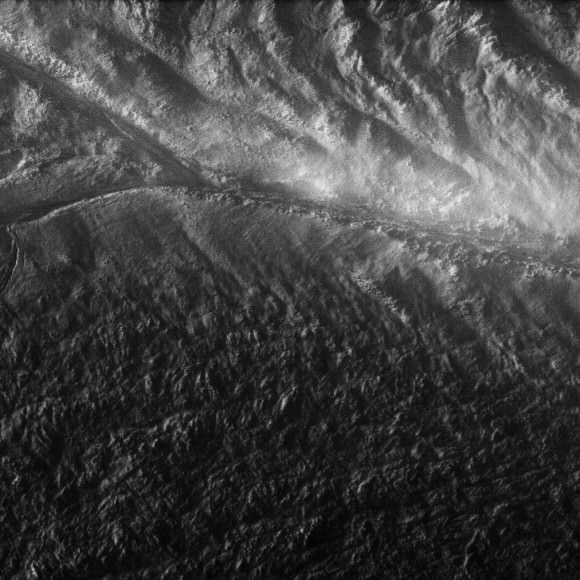
Their findings show it is likely that the entire south pole region is warm underneath, meaning Enceladus’ ocean could be just 2 km under the moon’s icy surface in that area. The finding agrees with a 2016 study, led by another Cassini team member, Ondrej Cadek, which estimated the thickness of the crust on Enceladus’ south pole to be less than the rest of the moon. That study estimated the depth of the ice shell to be less than 5 km (1.2 miles) at the south pole, while average depth on other areas of Enceladus is between 18–22 km (11-13 miles).
What generates the internal heat at Enceladus? The main source of heat remains a mystery, but scientists think gravitational forces between Enceladus, Saturn, and another moon, Dione pull and flex Enceladus’ interior. Known as tidal forces, the tugging causes the moon’s interior to rub, creating friction and heat. It also creates stress compressions and deformations on the crust, leading to the formation of faults and fractures. This in turn creates more heat in the sub-surface layers. In this scenario, the thinner icy crust in the south pole region is subject to a larger tidal deformation that means more heat being created to help keep the underground water warm.

Since the geysers weren’t known until Cassini’s arrival at Saturn, the spacecraft didn’t have a specific payload to study them, but scientists used the instruments at their disposal to make the best observations they could, flying the spacecraft to within 49 km (30 miles) of the surface. To fully study the tidal heating — or to determine if there is another source of heat — scientists will continue to study the data already taken by various Cassini instruments. But since the mission will be ending in September 2017, it may require another mission to this intriguing moon to fully figure out this mystery.
“This discovery opens new perspectives to investigate the emergence of habitable conditions on the icy moons of the gas giant planets,” says Nicolas Altobelli, ESA’s Project Scientist for Cassini–Huygens. “If Enceladus’ underground sea is really as close to the surface as this study indicates, then a future mission to this moon carrying an ice-penetrating radar sounding instrument might be able to detect it.”
“Finding temperatures near these three inactive fractures that are unexpectedly higher than those outside them adds to the intrigue of Enceladus,” said Cassini Project Scientist Linda Spilker at the Jet Propulsion Laboratory. “What is the warm underground ocean really like and could life have evolved there? These questions remain to be answered by future missions to this ocean world.”
Feel free to submit your mission proposals in the comment section below…
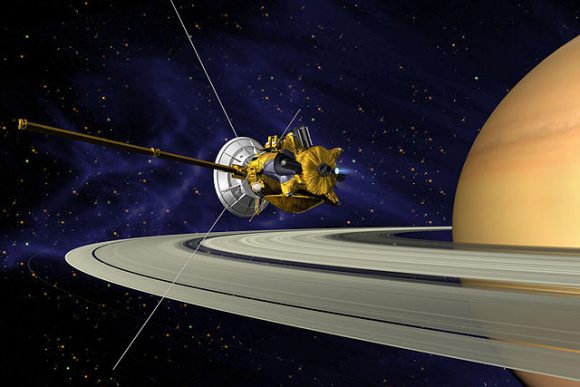
Sources: ESA
JPL
Paper: Thermally anomalous features in the subsurface of Enceladus’s south polar terrain” by A. Le Gall et al. (2017), published in Nature Astronomy
Images from Enceladus ‘Plume Dive’ Courtesy of Cassini
Oh, to hitch a ride aboard NASA’s Cassini spacecraft this week. The Saturn orbiting sentinel recently completed an amazing series of passes near the enigmatic ice-covered moon Enceladus, including a daredevil dive only 49 km (31 miles) above the southern pole of the moon and through an ice geyser. Images of the dramatic flyby were released by the Cassini team earlier this morning, revealing the moon in stunning detail.
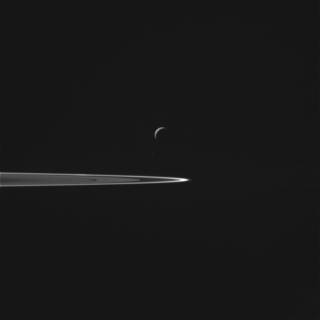
“Cassini’s stunning images are providing us a quick look at Enceladus from this ultra-close flyby, but some of the most exciting science is yet to come,” says NASA mission project scientist Linda Spilker in today’s NASA/JPL press release.
Launched in 1997 from Cape Canaveral Florida in a dramatic night shot, Cassini arrived at the Saturnian system in 2004, and has delivered on some amazing planetary science ever since.
Discovered in 1789 by William Herschel, we got our very first views of Enceladus via the Voyager 1 spacecraft at 202,000 kilometers distant in 1980. Cassini has flown by the moon 21 times over the past decade, and ice geysers were seen sprouting from the surface of the moon by Cassini on subsequent flybys. one final flyby of Enceladus is planned for this coming December.
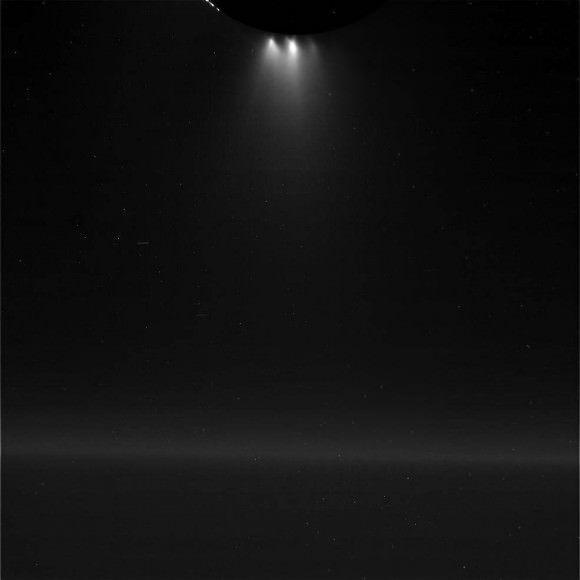
Mission planners are getting more daring with the spacecraft as its mission nears completion in 2017. The idea of reaching out and ‘tasting’ an icy plume emanating from Enceladus has been an enticing one, though a fast-moving good-sized ice pellet could spell disaster for the spacecraft.
NASA successfully established contact with the spacecraft on Wednesday night October 28th after the closest approach for the flyby at 11:22 AM EDT/ 15:22 UT (Universal Time) earlier in the day. Cassini is reported to be in good health, and we should see further images along with science data returns in the weeks to come.

A second, more distant flyby of Enceladus was completed by Cassini earlier this month as it passed 1,142 miles (1,839 kilometers) from the northern pole of Enceladus on October 14th, 2015 on its E-20 flyby.
But beyond just pretty post-cards from the outer solar system, Cassini’s successive passes by the mysterious moon will characterize just what might be occurring far down below.
Why Enceladus? Well, ever since ice geysers were spotted gushing from the fractured surface of the moon, it’s been on NASA’s short list of possible abodes for life in the solar system. Other contenders include Mars, Jupiter’s moon Europa, and Saturn’s giant moon, Titan. If the story of life on Earth is any indication, you need a place where an abundant level of chemical processes are occurring, and a subsurface ocean under the crust of Enceladus heated by tidal flexing may just fit the bill.
We’ll be adding further images and info to this post as more data comes in over the weekend, plus Cassini mission highlights, a look at the mission and final objectives and the last days of Cassini and more…
Stay tuned!
The end of Cassini in 2017 as it burns up in the atmosphere of Saturn will be a bittersweet affair, as our outer solar system eyes around the ringed planet fall silent. Cassini represents the most distant spacecraft inserted into orbit around a planet, and ESA’s Huygens lander on Titan marked the most remote landing on another world as well. Will we one day see a Titan Blimp or Ocean Explorer, or perhaps a dedicated life-finding mission to Enceladus? Final mission objectives for NASA’s Cassini spacecraft include a final flyby of Saturn’s large moon Titan, which will set the course for its final death plunge into the atmosphere of Saturn on September 15th, 2017.
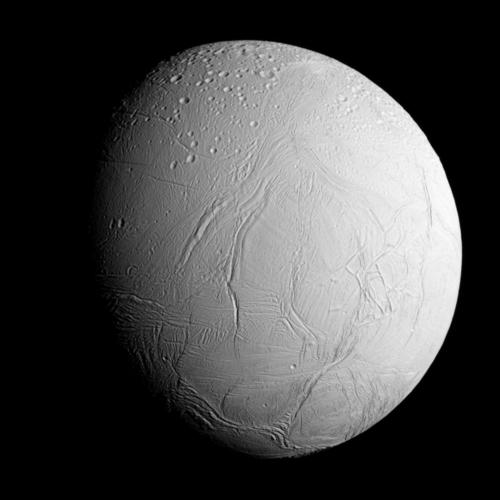
Want to see Enceladus for yourself? The moon orbits Saturn once every 1.4 days, reaching a maximum elongation of 13″ from the ring tips of Saturn and a maximum brightness of magnitude +11.7. Enceladus is one of six major moons of Saturn visible in a backyard telescope, and one of 62 moons of the ring planet known overall. The other five moons within reach of an amateur telescope are: Titan, Mimas, Dione, Rhea, and Tethys, and the fainter moon Hyperion shining at magnitude +15 might just be within reach of skill observers with large light bucket instruments.
Enjoy the amazing views of Enceladus, courtesy of Cassini!
Scientists Discover 101 Geysers Erupting at Saturn’s Intriguing Icy Moon Enceladus
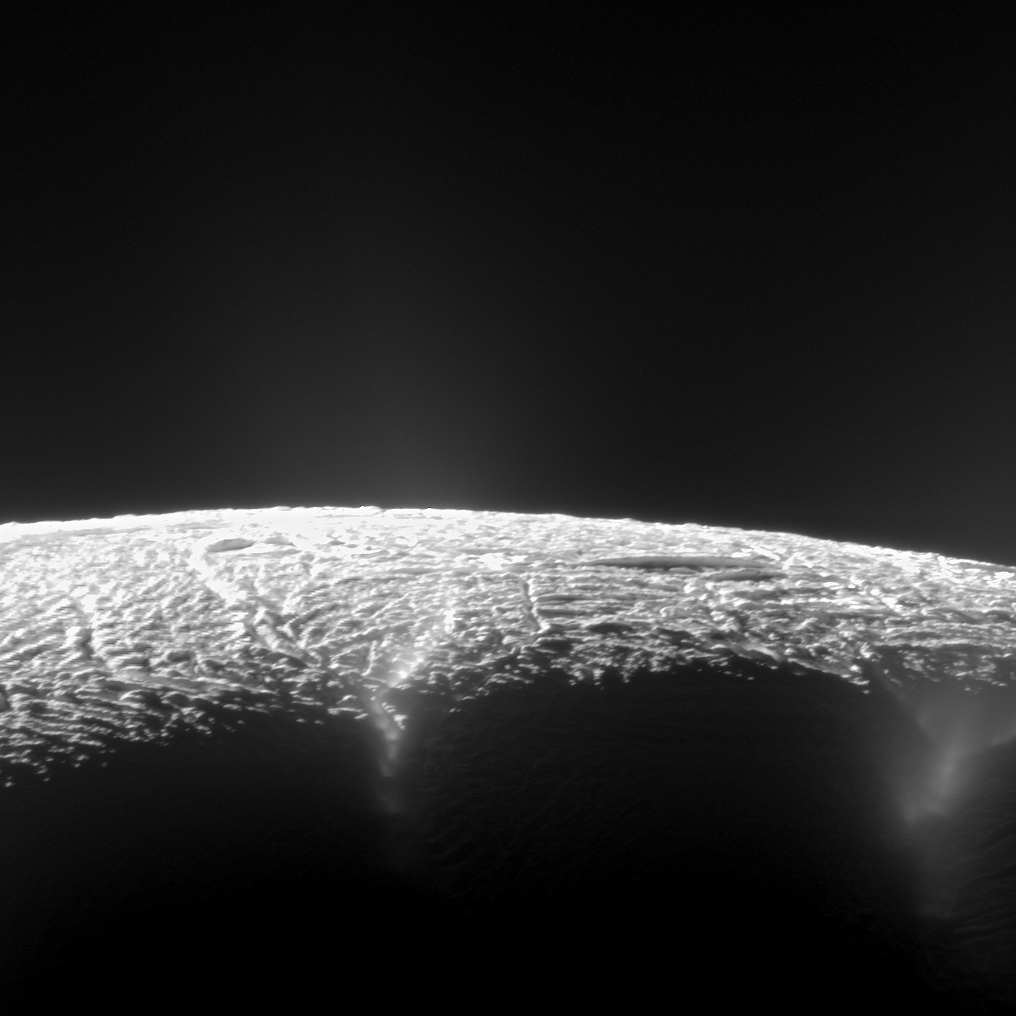
Scientists analyzing the reams of data from NASA’s Cassini orbiter at Saturn have discovered 101 geysers erupting from the intriguing icy moon Enceladus and that the spewing material of liquid water likely originates from an underground sea located beneath the tiny moons ice shell, according to newly published research.
The geysers are composed of tiny icy particles, water vapor and trace amounts of simple organic molecules. They were first sighted in Cassini imagery snapped during flyby’s of the 310-mile-wide (500 kilometers wide) moon back in 2005 and immediately thrust Enceladus forward as a potential abode for alien life beyond Earth and prime scientific inquisition.
Liquid water, organic molecules and an energy source are the key requirements for life as we know it.
The eruptions emanated from a previously unknown network of four prominent “tiger stripe” fractures, named Damascus, Baghdad, Cairo and Alexandria sulci, located at the south polar region of Saturn’s sixth largest moon.
Using imagery gathered over nearly seven years of surveys by Cassini’s cameras, researchers generated a survey map of the 101 geysers erupting from the four tiger strips.
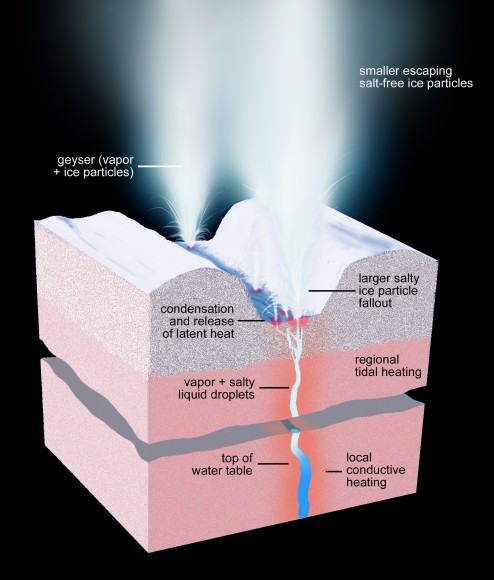
The new findings and theories on the physical nature of how the geysers erupt have been published in two articles in the current online edition of the Astronomical Journal.
Scientists had initially postulated that the origin of the geysers could be frictional heating generated from back and forth rubbing of the opposing walls of the tiger stripe fractures that converted water ice into liquids and vapors. Another theory held that the opening and closing of the fractures allowed water vapor from below to reach the surface.
The geysers locations was eventually determined to coincide with small local hot spots erupting from one of the tiger stripe fractures after researchers compared low resolution thermal emission maps with the geysers’ locations and found the greatest activity at the warmest spots.
After later high-resolution data was collected in 2010 by Cassini’s heat-sensing instruments the geysers were found to coincide with small-scale hot spots, measuring only a few dozen feet (or tens of meters) across.
“Once we had these results in hand we knew right away heat was not causing the geysers, but vice versa,” said Carolyn Porco, leader of the Cassini imaging team from the Space Science Institute in Boulder, Colorado, and lead author of the first paper. “It also told us the geysers are not a near-surface phenomenon, but have much deeper roots.”
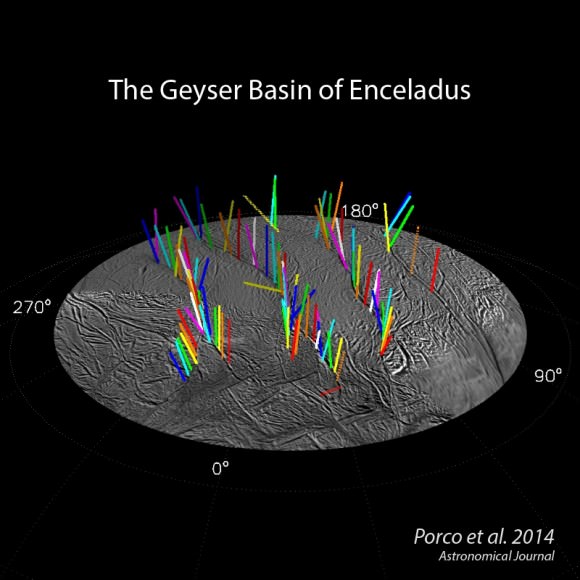
“Thanks to recent analysis of Cassini gravity data, the researchers concluded the only plausible source of the material forming the geysers is the sea now known to exist beneath the ice shell. They also found that narrow pathways through the ice shell can remain open from the sea all the way to the surface, if filled with liquid water,” according to a NASA press release.
These are very exciting results in the search for life beyond Earth and clearly warrant a follow up mission.
“In casting your sights on the geysering glory of Enceladus, you are looking at frozen mist that originates deep within the solar system’s most accessible habitable zone,” writes Porco in her Captain’s Log summary of the new findings.
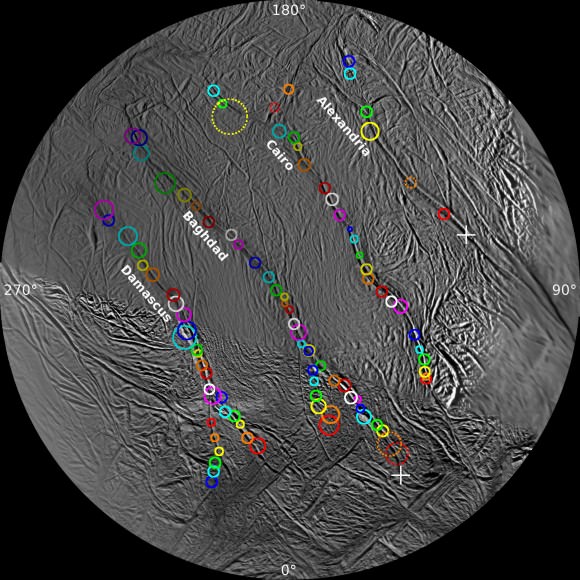
The Cassini-Huygens mission is a cooperative project between NASA, the European Space Agency (ESA) and the Italian Space Agency (ASI). Cassini was launched by a Titan IV rocket in 1997 and arrived at Saturn in 2004.
In 2005 Cassini deployed the Huygens probe which landed on Titan, Saturn’s largest moon sporting oceans of organic molecules and another prime location in the search for life.
The Cassini mission will conclude in 2017 with an intentional suicide dive into Saturn to prevent contamination on Titan and Enceladus – but lots more breathtaking science will be accomplished in the meantime!
Stay tuned here for Ken’s Earth & Planetary science and human spaceflight news.


